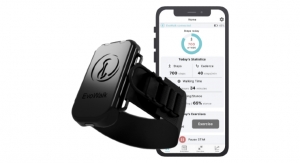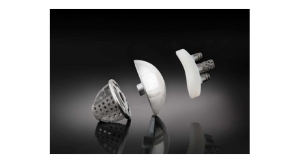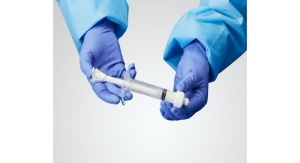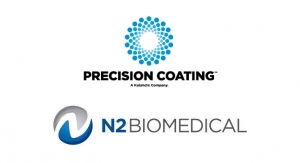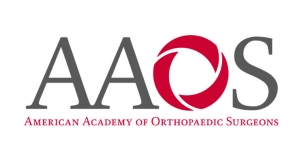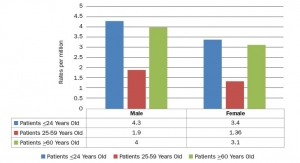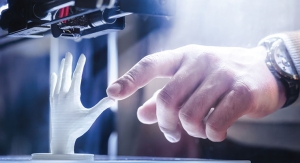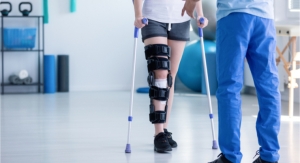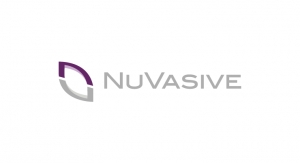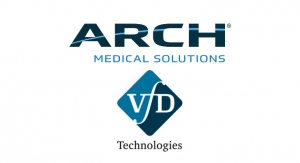Mark Bonifacio, Bonifacio Consulting Services05.23.16
As we get deeper into 2016, many people ask me what I think about the current merger and acquisition (M&A) activity and cycle. Among the most popular questions are: Can it continue? Where are valuations headed? When will it slow down? Who is investing and what areas are attracting investment? While no one likes to make predictions too far into the future, I think it is safe to say that as long as the current backdrop remains unchanged, I see M&A activity continuing throughout this year and early next. Keep in mind though, that the presidential election in November could affect the future direction of medtech investment.
The Catalysts
The framework of the Patient Protection and Affordable Care Act (in its current form) will continue to drive to value-based care, where products and procedures are measured by their outcomes and efficacy. Aging populations, a growing global middle class (particularly in developing economies), and a continued increase in chronic diseases all will continue to foster future investment in medical technology. While the United States continues to outspend other countries (it currently accounts for roughly one-third of global healthcare expenditures by most measures), developing countries are growing at double-digit rates. China is approaching $10 billion in healthcare expenditures and has grown more than 15 percent in the past two years; spending there is projected to continue at or above that rate through at least 2020, according to the World Health Organization and other market data. Also, China’s healthcare spending as a percentage of gross domestic product (GDP) is estimated to range between 7 and 8 percent—less than half the total spent on healthcare in the United States (estimated to be 18 percent of GDP). This proves there is plenty of room for growth in emerging markets (with China and the Asia-Pacific region being the largest by far).
Regardless of your stance on the Affordable Care Act, one point I think everyone will agree on is this: With healthcare spending approaching 20 percent of U.S. GDP, our expenditures cannot continue to grow at this pace, especially when the next nearest developed country is spending only 11 to 12 percent of its GDP with better patient outcomes. This discrepancy will be a big driver in the future of our healthcare. As the U.S. consumer has now increased his awareness along with his out-of-pocket spending, everyone is becoming more conscious of skyrocketing healthcare costs.
The Backdrop and Playing Field
Low interest rates, under-deployed capital, and a fragmented market at both the OEM level and the contract manufacturer (CM) level also continue to fuel the M&A fire in the medical device industry. Another key factor is growing competition from strategic buyers (those already in the space and those looking to get in), as well as private equity eager to acquire assets in this fragmented yet attractive space with steady non-cyclical gains.
The recent spate of OEM consolidation (Medtronic-Covidien, Becton Dickinson and Company–CareFusion, Cardinal Health–Cordis, Stryker Corp.–Sage Products LLC, Zimmer Holdings Inc.–Biomet Inc., and others) will drive the (needed) consolidation of an even more fragmented supplier CM base. OEMs we talk to already have unmanageable supply chains from organically growing over the years, and currently through inheriting the supply chains of their acquisitions. What initially attracted OEMs to CMs—working with “local suppliers” and plant proximity—is changing extremely rapidly. OEMs now prefer to work with full-service CMs that can service them on a global level. Some examples of CM consolidation in recent years is Jabil’s purchase of Nypro, Flextronics’ acquisition of Riwisa AG, TE Connectivity Ltd.’s purchase of both AdvancedCath and Creganna Medical Group, Golden Gate Capital’s partnership with Philips-Medisize, West Pharmaceuticals’ merger with the Tech Group, Accellent’s acquisition of Lake Region Medical, and Hitachi Metals’ purchase of HTP-Meds LLC. Earnings before interest, tax, depreciation, and amortization (EBITDA) multiples continue to impress and remain strong as most of those CM deals were all worth more than 10 times EBITDA.
Over the last few years, we have also seen other companies trying to enter the space. Techniplex, Nordson Corporation, Molex Inc., Lubrizol Corporation, and others have secured a foothold in the medtech contract manufacturing space through acquisition and appear to be hungry for more deals.
According to Bloomberg, the top 10 global medical technology companies account for approximately 40 percent of the total market while the top 50 account for about 78 percent of the sector. The five largest finished goods CMs account for roughly 25 percent of the outsourced segment.
Based on some of our internal research, interviews with OEMs, and market estimates, OEMs outsource between 22 and 27 percent of their manufacturing costs.
Even as U.S growth in the medical device market continues to cool from past gains, and the inconceivable 18 percent U.S. GDP spending on healthcare, global medtech growth rates will continue to be robust due to demographics and health trends, according to various consultants and research firms. Another contributor is the cost-benefit ratio of medical devices. By many estimates, the approximate expenditures on medical devices in the United States is roughly 5 to 6 percent of the nation’s total domestic healthcare spending. When we think of the enormous benefits many of today’s devices bring to the American population and the improvement to our quality of life, I believe the device sector will continue to be a winner in the value-based market. Those that continue to innovate and look for disruptive changes (not incremental) will certainly lead the pack.
Medtronic is a perfect example. In 2013, the company collaborated with Apollo Hospitals in India to bring affordable, portable hemodialysis systems to that developing nation to provide end-stage renal disease patients lifesaving therapy from hospital to home.
What’s Next and What’s New
Will the market foster more collaborations along the lines of Medtronic’s partnership with Apollo Hospitals? I think the answer is yes, both in the United States and around the world.
Along with continued M&A, I believe the market will also foster deeper ties between devices and services/procedures as OEMs seek to “own the space” or “own the disease” and the continuum of care for certain conditions and procedures. We may even see some non-traditional acquisitions where device makers want to capture more of a continuum of care from the home to the hospital and back to the home.
The orthopedic sector has begun to experience such continuum of care ownership with certain conditions, and I believe this trend will begin to stretch across many other disciplines.
As with many aspects of the healthcare world, in the United States and globally, things do not change rapidly; and adoption curves, especially for disruptive technologies or novel approaches, will take time. We will see pockets of adoption that catch on and become standard as others will not prove to be successful. We are in a highly regulated industry with a great deal of oversight and large portion of government spending. (Note: Despite having a country with private insurance, the American government—thanks to Medicare, Medicaid, the Veterans Administration, and other programs—continues to be the top payor).
Health system providers, especially not-for-profits (about 40 or so) have started venture funds. While still risky, this risk may be partially offset by the benefits of the technology or products under development. They are also experimenting with new ways of conducting business, usually allowing a lead investor or pure venture capitalist lead the round and preferring instead to act as co-investors.
Last May, a smartphone app called Heal made its debut. Functioning in much the same way as Uber, the Heal app delivers a doctor to users’ doors in 20 to 60 minutes for a flat fee of $99. Pager and Go2Nurse are also similar app models. Will hospitals soon begin to offer these types of services? Only time will tell.
Doctor on Demand, introduced in 2013, provides a $40 video consult. Founder Adam Jackson claims 95 percent of people who use the app are diagnosed and treated, with 5 percent referred to specialists.
“There is a huge access problem to primary care in the United States,” Jackson told The New York Times last May. “The average wait time to see a doctor is 20 days. People really want and need something faster, and now we have the technology on both sides to get it.”
Telemedicine/telehealth is just one bright spot of innovation that will continue to change how healthcare is provided and delivered. This is not a death knoll to the broader medical device industry, but rather a great opportunity to access more patients and to get them the care (and products) they need.
Transcatheter aortic valve replacement, minimally invasive surgical procedures, rapid point-of-care diagnostics, and drug delivery all show great promise in the new, value-based era.
While some pundits debate the merits of adding patients to insurance roles, I think we can all agree that general access to good, affordable healthcare for all of the population will be a good opportunity for providers and device makers alike.
Disruption is occurring in many sectors and in many forms. And while it rarely occurs overnight, disruption, nevertheless, is taking place in the global healthcare ecosystem. Investment and M&A are almost certain to continue in the near term. The CMs and OEMs that embrace this new landscape and are not afraid to change the way they conduct business (particularly unsuccessful practices of the past) will be handsomely rewarded and lead the pack into the (new) future of global healthcare.
Mark Bonifacio is founder and president of Bonifacio Consulting Services LLC, a global consulting and advisory firm to medical device OEMs, contract manufacturers, private equity, and other investors in the medtech manufacturing sector. Bonifacio has a B.S. in plastics engineering from the University of Lowell (now UMASS-Lowell), and more than 25 years of experience in medical device manufacturing across many therapeutic disciplines and market segments. After working for major medical device OEMs, Bonifacio co-founded APEC, a Baldwin Park, Calif.-based contract manufacturer, and sold it to Helix Medical (now Freudenberg Medical) in 2007. He founded Bonifacio Consulting Services in 2008. BCS is headquartered in Boston, Mass., and has offices in California, Florida, and China.
The Catalysts
The framework of the Patient Protection and Affordable Care Act (in its current form) will continue to drive to value-based care, where products and procedures are measured by their outcomes and efficacy. Aging populations, a growing global middle class (particularly in developing economies), and a continued increase in chronic diseases all will continue to foster future investment in medical technology. While the United States continues to outspend other countries (it currently accounts for roughly one-third of global healthcare expenditures by most measures), developing countries are growing at double-digit rates. China is approaching $10 billion in healthcare expenditures and has grown more than 15 percent in the past two years; spending there is projected to continue at or above that rate through at least 2020, according to the World Health Organization and other market data. Also, China’s healthcare spending as a percentage of gross domestic product (GDP) is estimated to range between 7 and 8 percent—less than half the total spent on healthcare in the United States (estimated to be 18 percent of GDP). This proves there is plenty of room for growth in emerging markets (with China and the Asia-Pacific region being the largest by far).
Regardless of your stance on the Affordable Care Act, one point I think everyone will agree on is this: With healthcare spending approaching 20 percent of U.S. GDP, our expenditures cannot continue to grow at this pace, especially when the next nearest developed country is spending only 11 to 12 percent of its GDP with better patient outcomes. This discrepancy will be a big driver in the future of our healthcare. As the U.S. consumer has now increased his awareness along with his out-of-pocket spending, everyone is becoming more conscious of skyrocketing healthcare costs.
The Backdrop and Playing Field
Low interest rates, under-deployed capital, and a fragmented market at both the OEM level and the contract manufacturer (CM) level also continue to fuel the M&A fire in the medical device industry. Another key factor is growing competition from strategic buyers (those already in the space and those looking to get in), as well as private equity eager to acquire assets in this fragmented yet attractive space with steady non-cyclical gains.
The recent spate of OEM consolidation (Medtronic-Covidien, Becton Dickinson and Company–CareFusion, Cardinal Health–Cordis, Stryker Corp.–Sage Products LLC, Zimmer Holdings Inc.–Biomet Inc., and others) will drive the (needed) consolidation of an even more fragmented supplier CM base. OEMs we talk to already have unmanageable supply chains from organically growing over the years, and currently through inheriting the supply chains of their acquisitions. What initially attracted OEMs to CMs—working with “local suppliers” and plant proximity—is changing extremely rapidly. OEMs now prefer to work with full-service CMs that can service them on a global level. Some examples of CM consolidation in recent years is Jabil’s purchase of Nypro, Flextronics’ acquisition of Riwisa AG, TE Connectivity Ltd.’s purchase of both AdvancedCath and Creganna Medical Group, Golden Gate Capital’s partnership with Philips-Medisize, West Pharmaceuticals’ merger with the Tech Group, Accellent’s acquisition of Lake Region Medical, and Hitachi Metals’ purchase of HTP-Meds LLC. Earnings before interest, tax, depreciation, and amortization (EBITDA) multiples continue to impress and remain strong as most of those CM deals were all worth more than 10 times EBITDA.
Over the last few years, we have also seen other companies trying to enter the space. Techniplex, Nordson Corporation, Molex Inc., Lubrizol Corporation, and others have secured a foothold in the medtech contract manufacturing space through acquisition and appear to be hungry for more deals.
According to Bloomberg, the top 10 global medical technology companies account for approximately 40 percent of the total market while the top 50 account for about 78 percent of the sector. The five largest finished goods CMs account for roughly 25 percent of the outsourced segment.
Based on some of our internal research, interviews with OEMs, and market estimates, OEMs outsource between 22 and 27 percent of their manufacturing costs.
Even as U.S growth in the medical device market continues to cool from past gains, and the inconceivable 18 percent U.S. GDP spending on healthcare, global medtech growth rates will continue to be robust due to demographics and health trends, according to various consultants and research firms. Another contributor is the cost-benefit ratio of medical devices. By many estimates, the approximate expenditures on medical devices in the United States is roughly 5 to 6 percent of the nation’s total domestic healthcare spending. When we think of the enormous benefits many of today’s devices bring to the American population and the improvement to our quality of life, I believe the device sector will continue to be a winner in the value-based market. Those that continue to innovate and look for disruptive changes (not incremental) will certainly lead the pack.
Medtronic is a perfect example. In 2013, the company collaborated with Apollo Hospitals in India to bring affordable, portable hemodialysis systems to that developing nation to provide end-stage renal disease patients lifesaving therapy from hospital to home.
What’s Next and What’s New
Will the market foster more collaborations along the lines of Medtronic’s partnership with Apollo Hospitals? I think the answer is yes, both in the United States and around the world.
Along with continued M&A, I believe the market will also foster deeper ties between devices and services/procedures as OEMs seek to “own the space” or “own the disease” and the continuum of care for certain conditions and procedures. We may even see some non-traditional acquisitions where device makers want to capture more of a continuum of care from the home to the hospital and back to the home.
The orthopedic sector has begun to experience such continuum of care ownership with certain conditions, and I believe this trend will begin to stretch across many other disciplines.
As with many aspects of the healthcare world, in the United States and globally, things do not change rapidly; and adoption curves, especially for disruptive technologies or novel approaches, will take time. We will see pockets of adoption that catch on and become standard as others will not prove to be successful. We are in a highly regulated industry with a great deal of oversight and large portion of government spending. (Note: Despite having a country with private insurance, the American government—thanks to Medicare, Medicaid, the Veterans Administration, and other programs—continues to be the top payor).
Health system providers, especially not-for-profits (about 40 or so) have started venture funds. While still risky, this risk may be partially offset by the benefits of the technology or products under development. They are also experimenting with new ways of conducting business, usually allowing a lead investor or pure venture capitalist lead the round and preferring instead to act as co-investors.
Last May, a smartphone app called Heal made its debut. Functioning in much the same way as Uber, the Heal app delivers a doctor to users’ doors in 20 to 60 minutes for a flat fee of $99. Pager and Go2Nurse are also similar app models. Will hospitals soon begin to offer these types of services? Only time will tell.
Doctor on Demand, introduced in 2013, provides a $40 video consult. Founder Adam Jackson claims 95 percent of people who use the app are diagnosed and treated, with 5 percent referred to specialists.
“There is a huge access problem to primary care in the United States,” Jackson told The New York Times last May. “The average wait time to see a doctor is 20 days. People really want and need something faster, and now we have the technology on both sides to get it.”
Telemedicine/telehealth is just one bright spot of innovation that will continue to change how healthcare is provided and delivered. This is not a death knoll to the broader medical device industry, but rather a great opportunity to access more patients and to get them the care (and products) they need.
Transcatheter aortic valve replacement, minimally invasive surgical procedures, rapid point-of-care diagnostics, and drug delivery all show great promise in the new, value-based era.
While some pundits debate the merits of adding patients to insurance roles, I think we can all agree that general access to good, affordable healthcare for all of the population will be a good opportunity for providers and device makers alike.
Disruption is occurring in many sectors and in many forms. And while it rarely occurs overnight, disruption, nevertheless, is taking place in the global healthcare ecosystem. Investment and M&A are almost certain to continue in the near term. The CMs and OEMs that embrace this new landscape and are not afraid to change the way they conduct business (particularly unsuccessful practices of the past) will be handsomely rewarded and lead the pack into the (new) future of global healthcare.
Mark Bonifacio is founder and president of Bonifacio Consulting Services LLC, a global consulting and advisory firm to medical device OEMs, contract manufacturers, private equity, and other investors in the medtech manufacturing sector. Bonifacio has a B.S. in plastics engineering from the University of Lowell (now UMASS-Lowell), and more than 25 years of experience in medical device manufacturing across many therapeutic disciplines and market segments. After working for major medical device OEMs, Bonifacio co-founded APEC, a Baldwin Park, Calif.-based contract manufacturer, and sold it to Helix Medical (now Freudenberg Medical) in 2007. He founded Bonifacio Consulting Services in 2008. BCS is headquartered in Boston, Mass., and has offices in California, Florida, and China.


